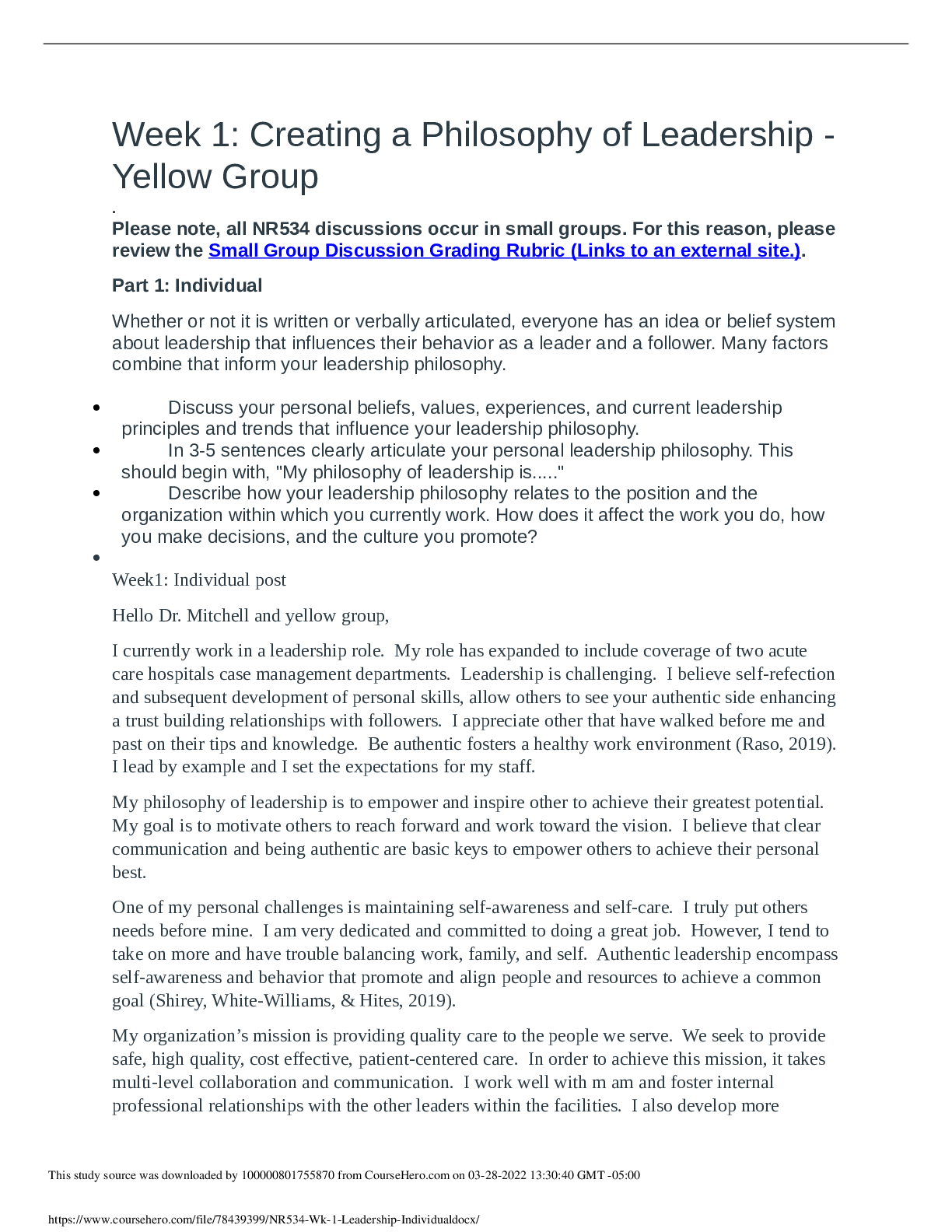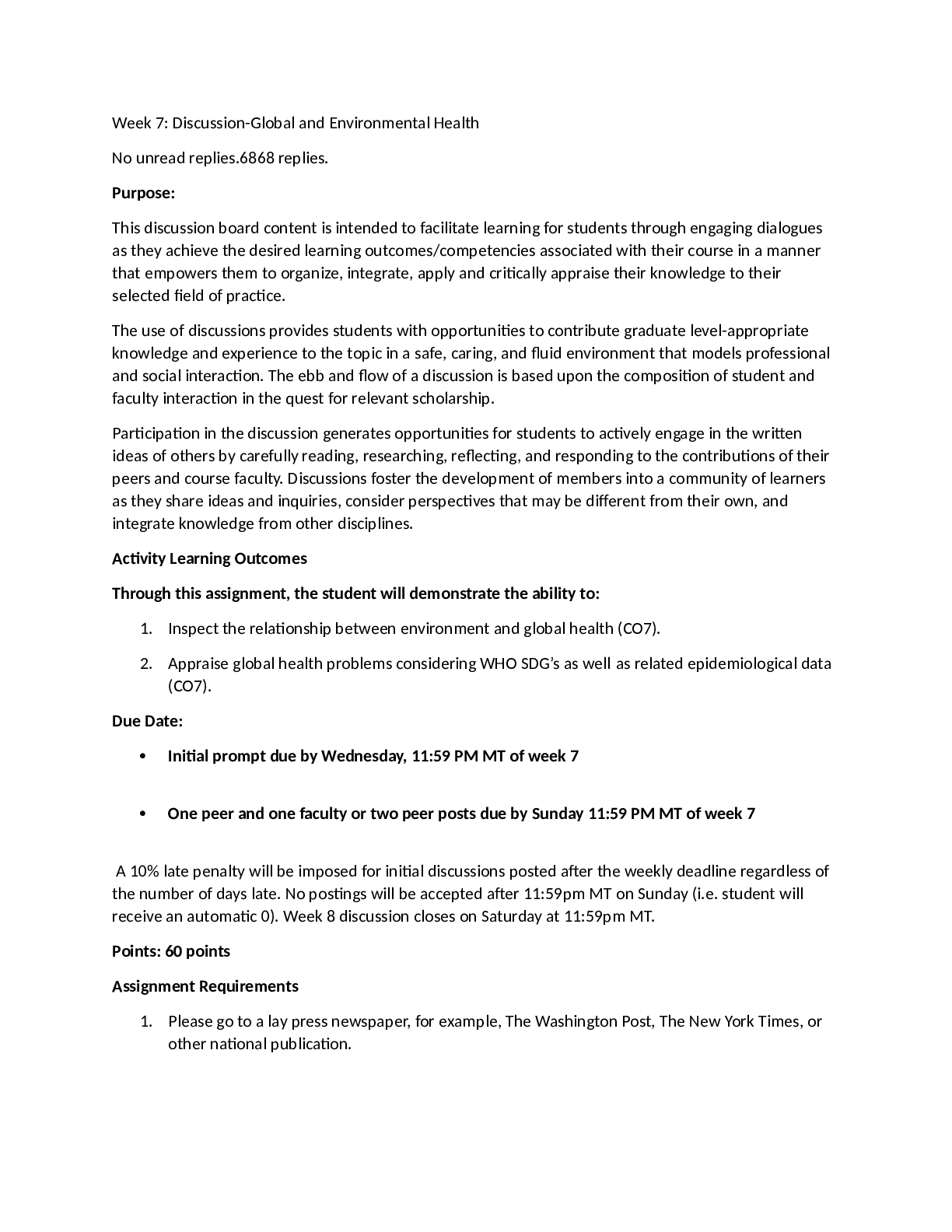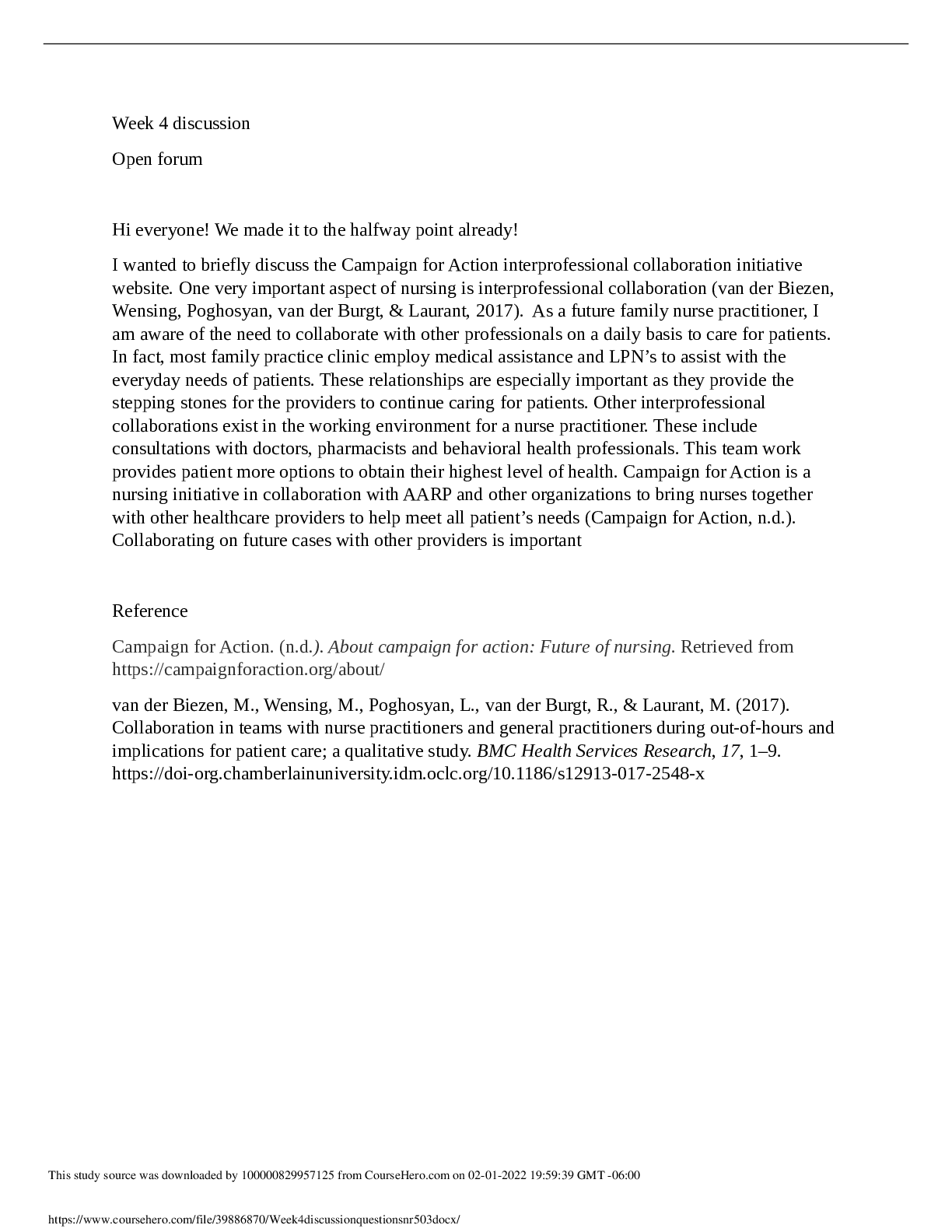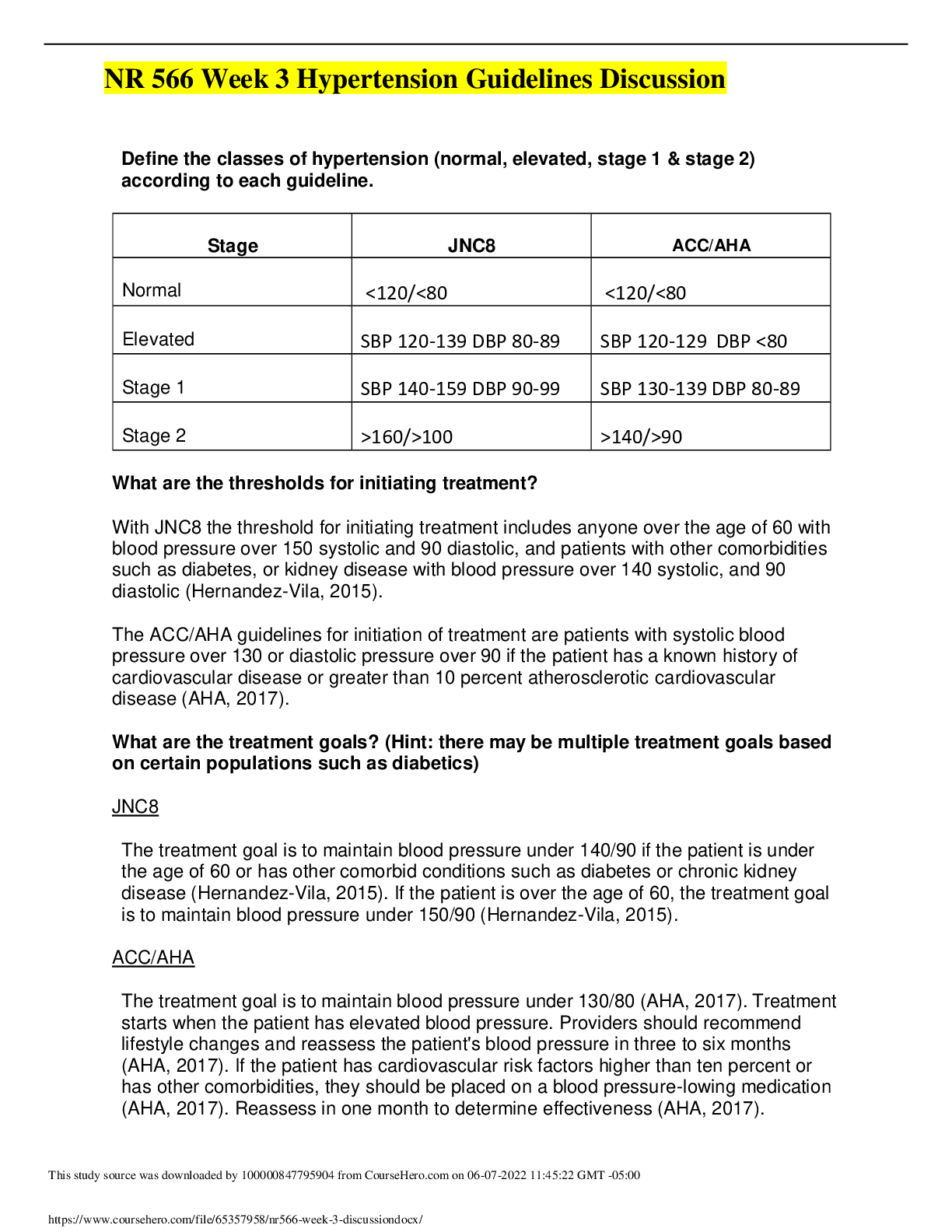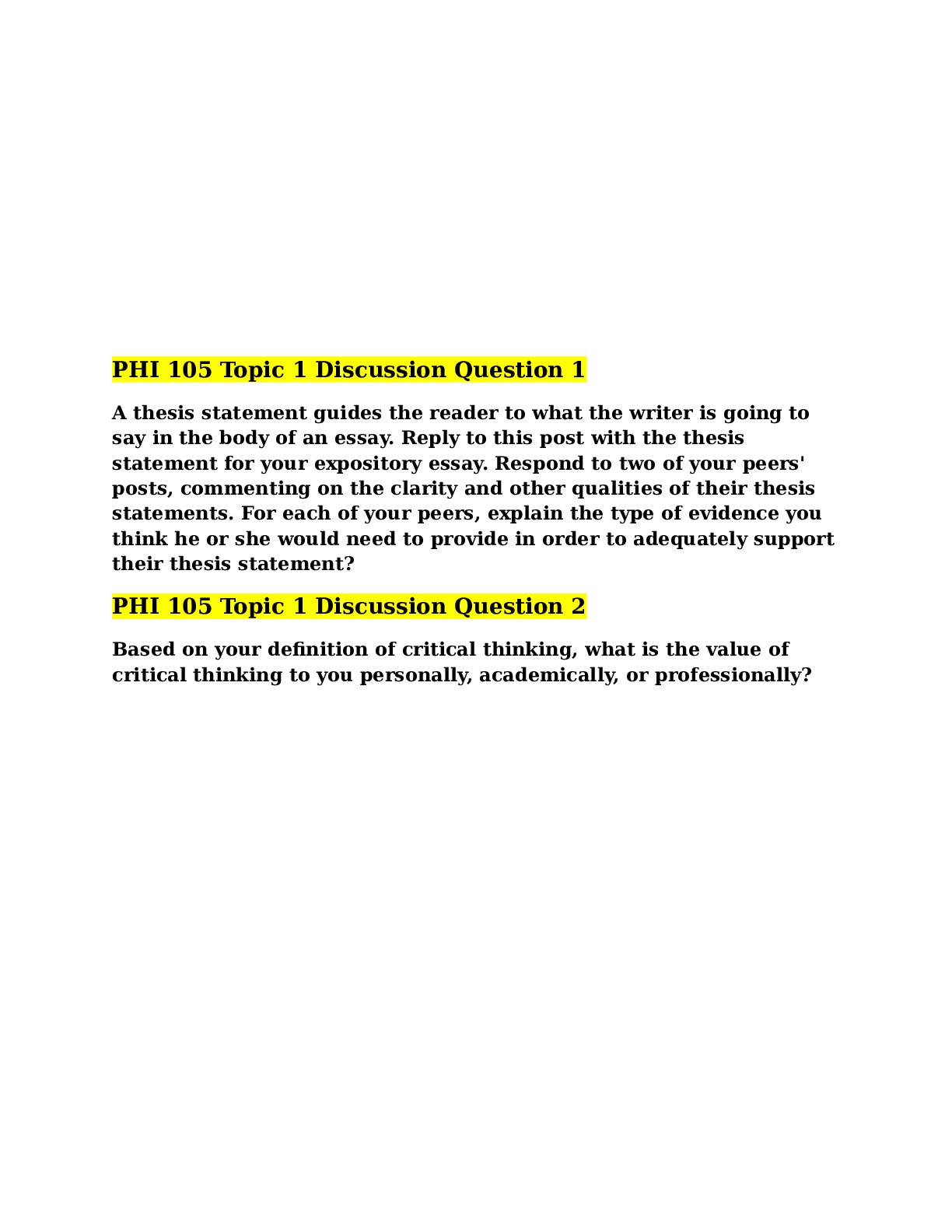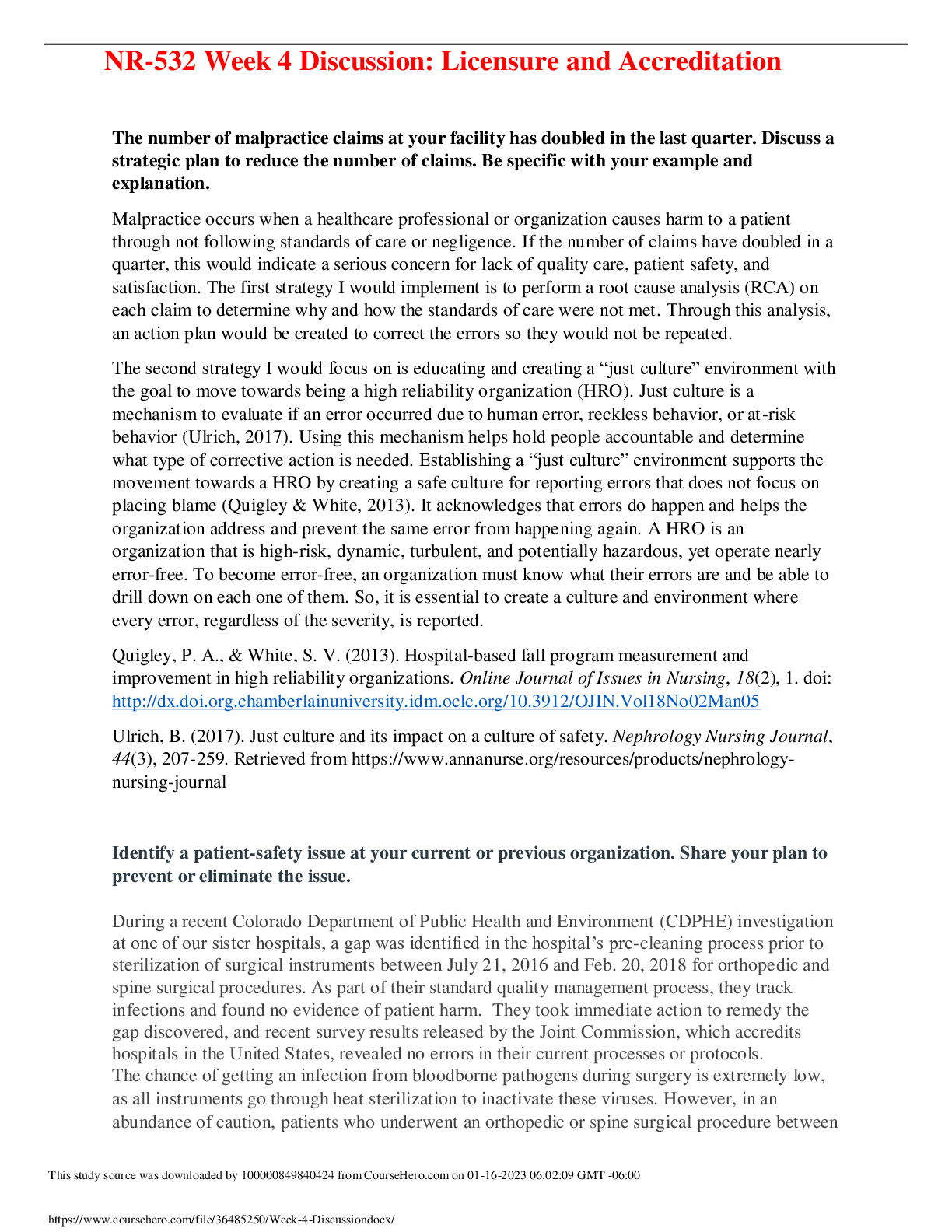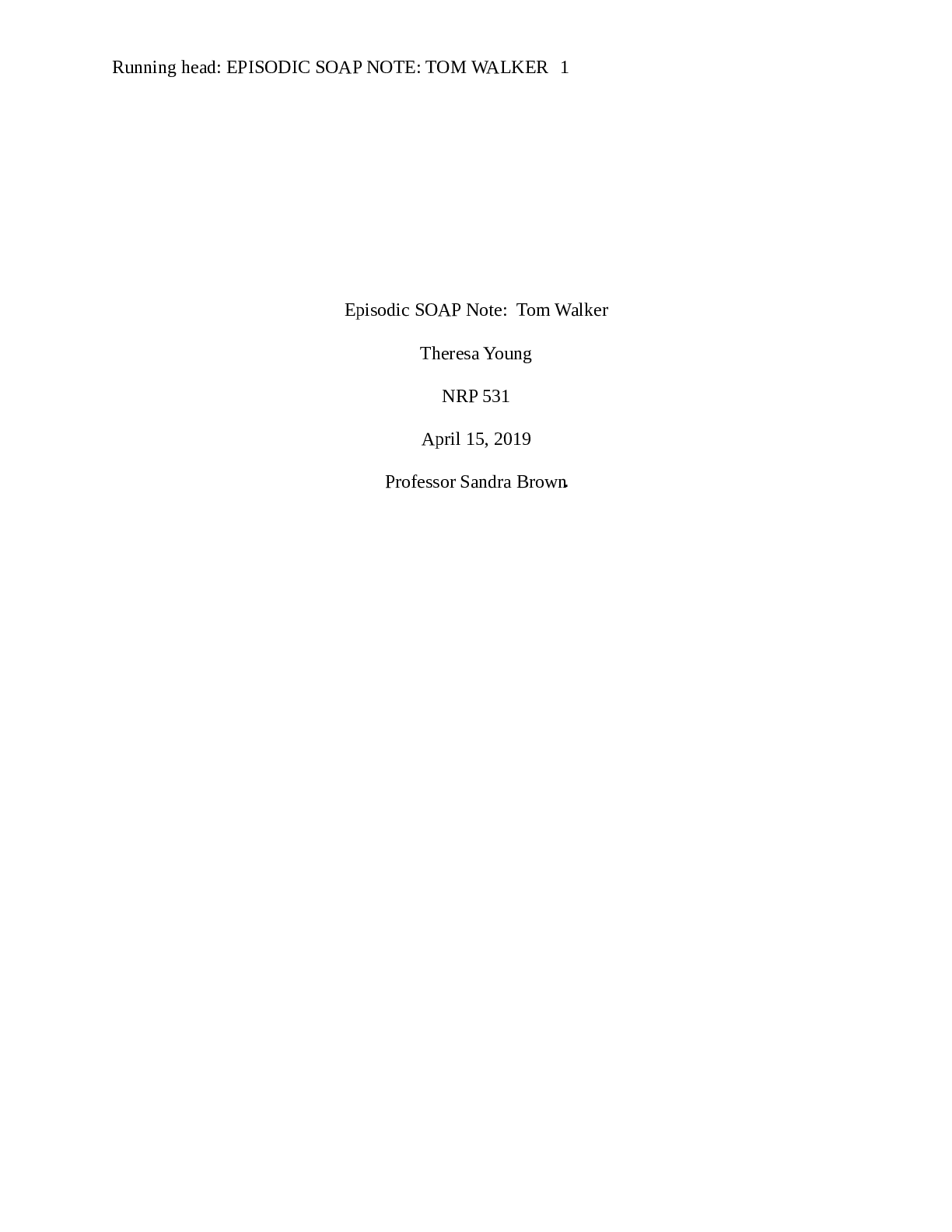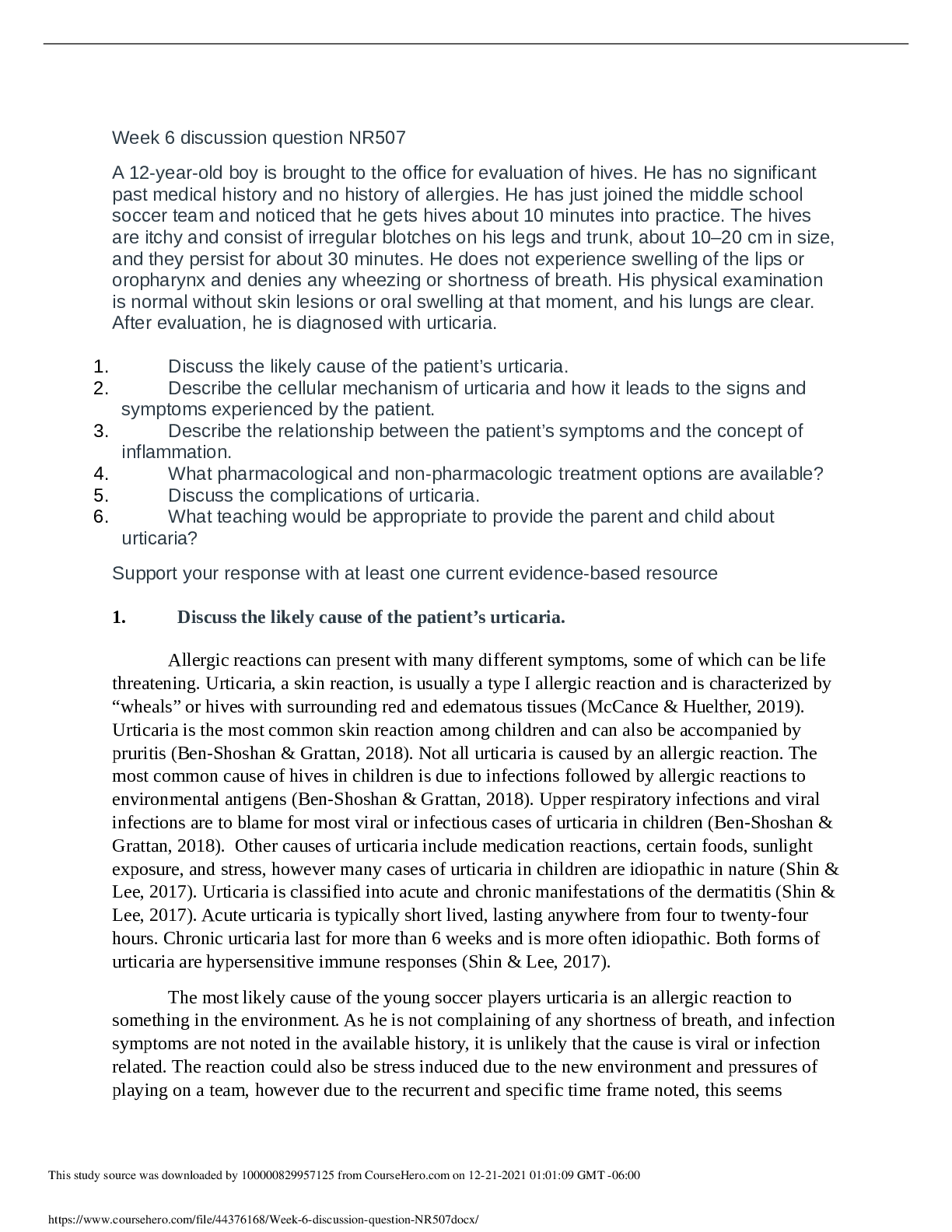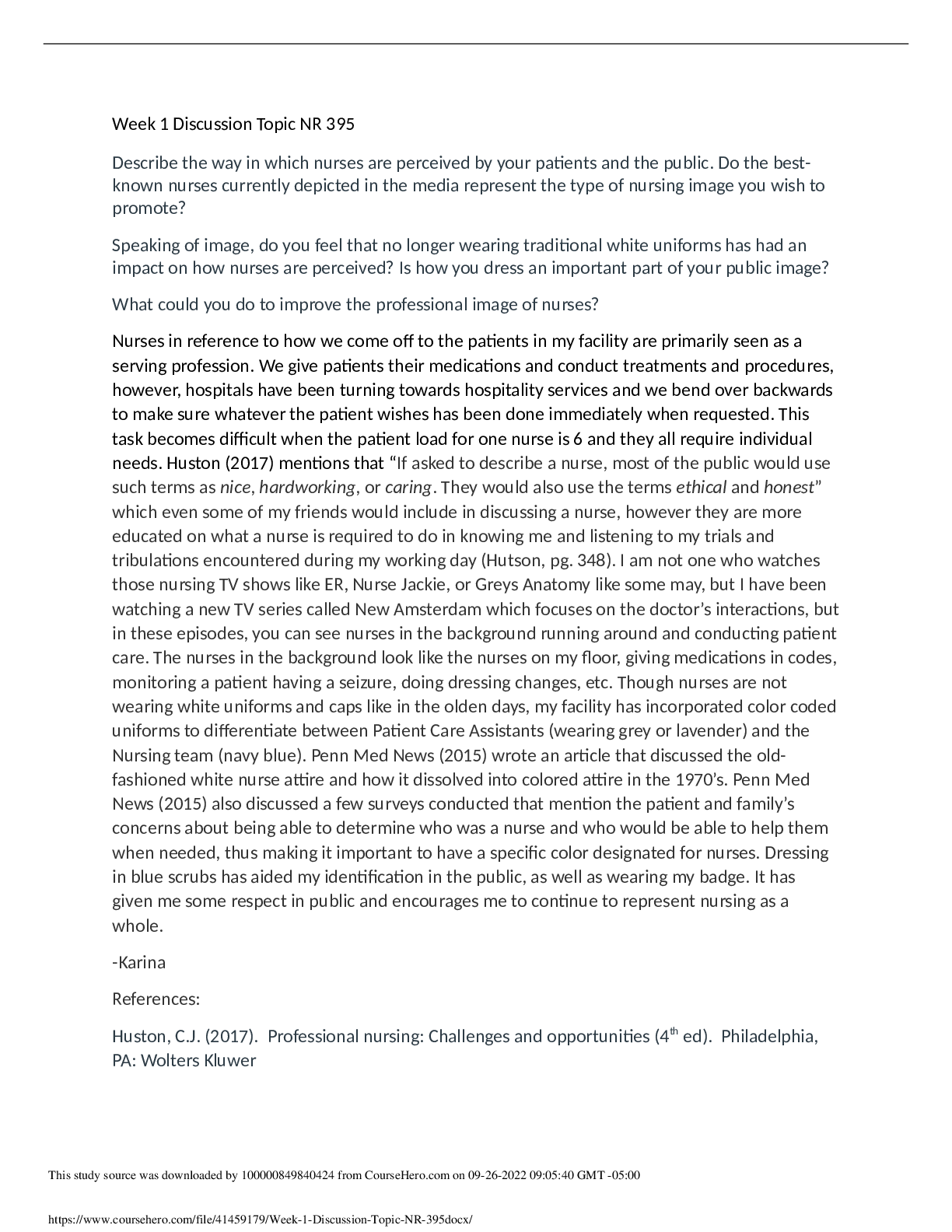Anatomy and Physiology - A&P 1 > DISCUSSION POST > BIOS-251 Week 6 Discussion: Bone Tissue | Download To Score An (All)
BIOS-251 Week 6 Discussion: Bone Tissue | Download To Score An
Document Content and Description Below
BIOS-251 Week 6 Discussion: Bone Tissue -Describe the bone cells that are involved in generation of bone tissue. There are 4 primary bone cells that are responsible for generation of bone tiss... ue. These cells are called: osteogenic cells, osteoblasts, osteocytes, and osteoclasts. Osteogenic cells are the only cells that divide and are the stem cells of the bone cells. Osteogenic cells will differentiate into bone cells such as osteoblasts and osteoclasts. Osteoblats are responsible for synthesis of bone formation from organic matter and this process is called osteogenesis. Ostecytes are cells that are deposited and trapped in the cellular matrix and mature osteoblasts. Osteocytes act as strain senors and will produce biochemical signals that are responsible for regulation of bone formation and remodeling. Osteoclasts are the cells responsible for the breakdown and reabsorption of bone. Osteocalts carry out bone-dissolving functions and are also essential in bone remodeling along with osteoblasts. -Describe the steps of fracture repair. The first step in fracture repair is “formation of hematoma and granulation tissue”(Saladin, p 217) and is similar in the inflammation stage of tissue repair. The blood vessels that were severed in the fracture will bleed and start the formation of blood clots. In this process the fibroblasts, macrophages, osteoclasts, and osteogenic cells will flood the area on both periosteal and medullary sides of the fracture. The abundance of cells in the area will being to convert the blood clot into a soft fibrous mass also known as granulation tissue. The second step in fracture repair is “formation of a soft callus.” (Saladin, p 217) Formation of the soft callus involves collagen being deposited into the granulation tissue formed by the previous process of fracture repair. Osteogenic cells acting as stem cells will then form chondroblasts which are responsible for producing patches of fibrocartilage. The third step in fracture repair is the “Conversion of hard callus.”(Saladin, p 217) Osteoblasts will produce a hard callus around the fracture and is responsible for conjoining the broken fracture together. The third step is only possible with the immobilization of the fractured bone to prevent further injury to the bone. The final step in fracture repair is “Remodeling” (Saladin, p 217) In the final step, osteoclasts will clean the affected area by clearing small bone fragments through reabsorption. Osteoblasts will begin bone formation and deposit spongy bone tissue into the gap created by the broken bone. The spongy bone will eventually complete filling the area and form into compact bone. -The physician indicated that Kyndall was lucky because the fracture occurred about 3 inches below the epiphyseal plate. Why is this important? What are some possible outcomes if the epiphyseal plate had been damaged? The reason the physicians indicated Kyndall was lucky is because Kyndall’s growth plate was unaffected in the fracture. Growth plates are where bone growth or elongation occurs and is extremely fragile or susceptible to damage. Damage to the growth plate can cause bone deformities such as “the bone could end up a little crooked or slight longer or shorter than expected.”(Kruse, 2018) Damage to the growth plate can also cause one limb to be longer or shorter than the other or even stunted bone growth. -What type of fracture do you think occurred and why? Kyndall most likely suffered an oblique fracture. An oblique fracture can be characterized as a fracture from the “result of a sharp blow that comes from an angle due to a fall or other trauma.”(South Shore Orthopedics,2020) The neighbor’s dog had knocked Kyndall of her bike and she most likely suffered the fracture from the fall. References Kruse, R., Dubowy, S. (2018 June) Growth Plate Fractures. Kids Health. Retrieved from https://kidshealth.org/en/parents/growth-plate-injuries.html Saladin, K. (2020). Anatomy & Physiology: The Unity of Form and Function (9th ed.). McGraw-Hill Education. South Shore Orthopedics. (2020, May 26) 10 Common Types of Bone Fractures. South Shore Orthopedics. Retrieved from https://www.southshoreorthopedics.com/common- types-of-bone-fractures/ [Show More]
Last updated: 2 years ago
Preview 1 out of 2 pages

Buy this document to get the full access instantly
Instant Download Access after purchase
Buy NowInstant download
We Accept:

Reviews( 0 )
$8.50
Can't find what you want? Try our AI powered Search
Document information
Connected school, study & course
About the document
Uploaded On
Nov 04, 2022
Number of pages
2
Written in
Additional information
This document has been written for:
Uploaded
Nov 04, 2022
Downloads
0
Views
74


